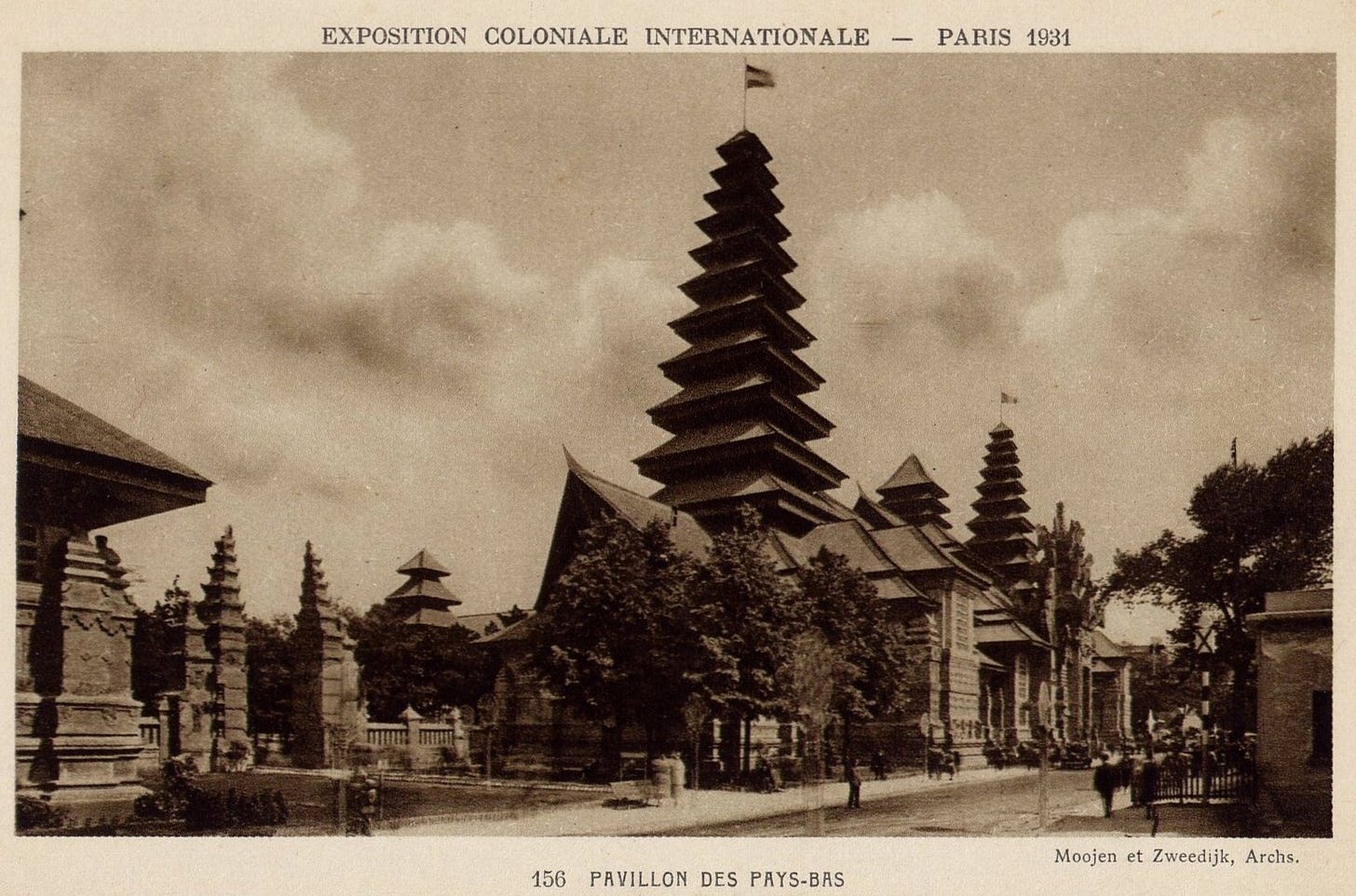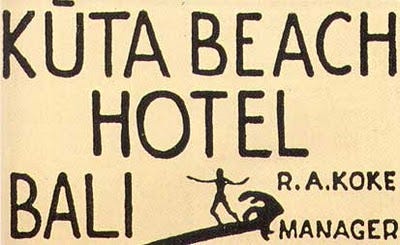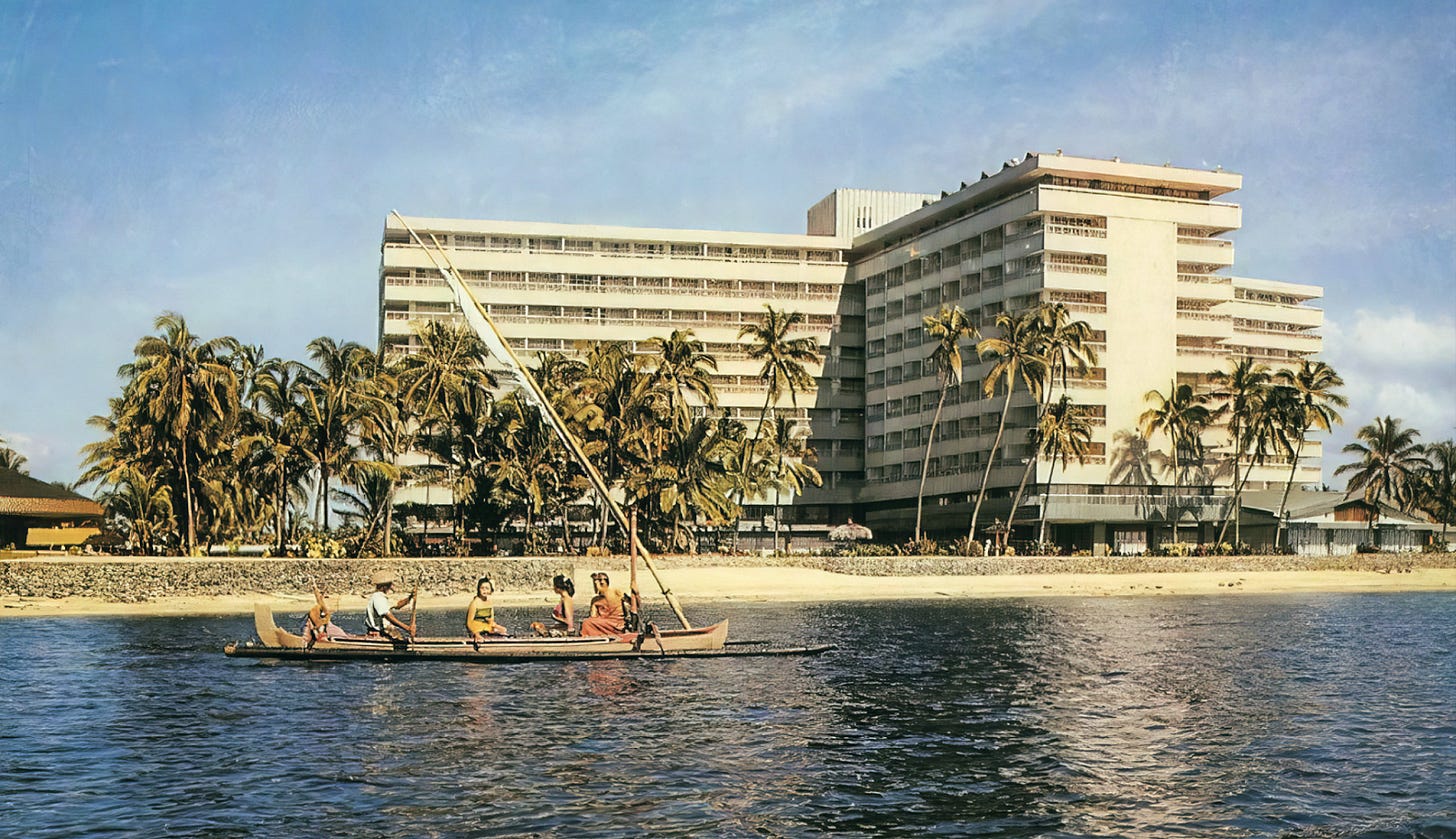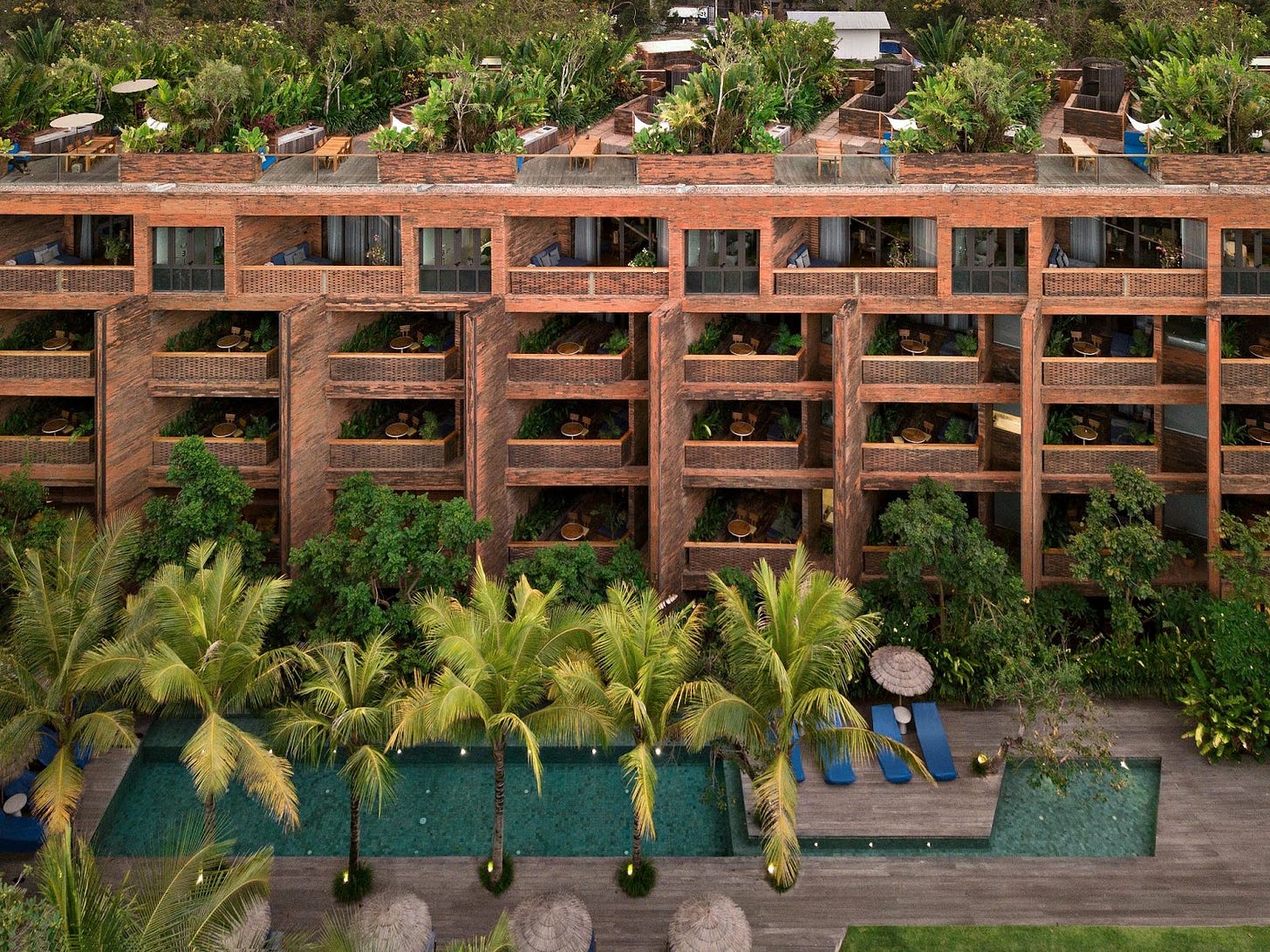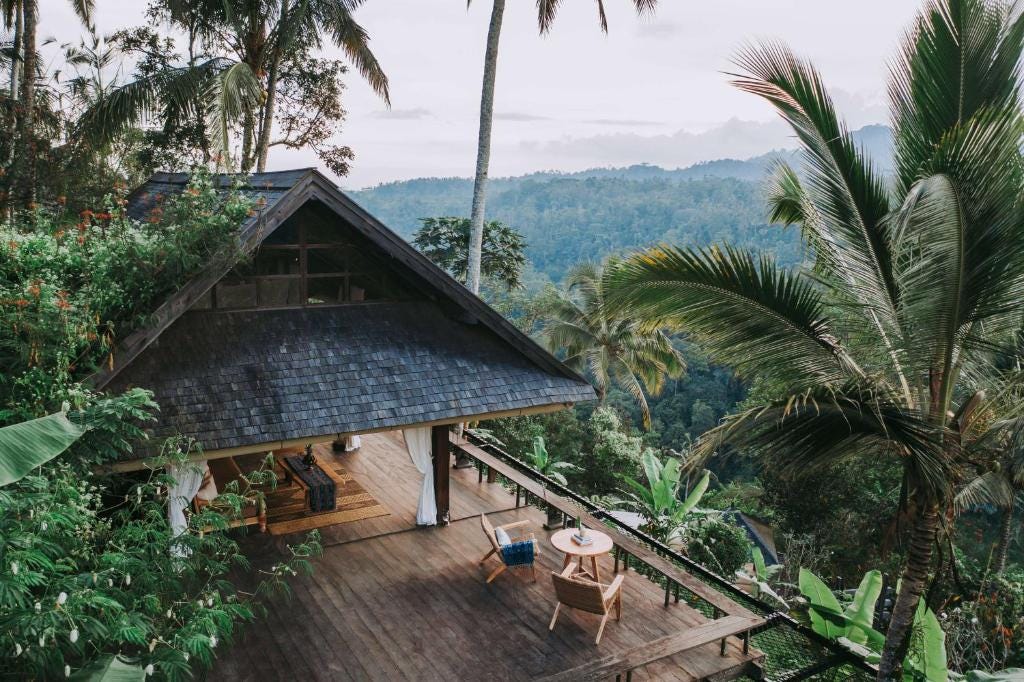Unknown Author | May 13, 2025
The Bali Image Tour Edition
Seven slices from the last century of the island’s history.
The below is a second, photo-led excerpt from WITI friend Radit Mahindro’s new book, Paras - Documenting 100 Years of Hospitality and Hotel Architecture in Bali.
Why is this interesting?
Radit has been deep in the archives, finding old posters and images that tell the story of Bali’s rise as a tourism destination. Below, we’ve singled out seven moments we thought WITI readers would especially like. Read on to discover where the Aman Resorts founder bought his own vacation home—as did many other hoteliers—and much more.
Early Bali Tourism
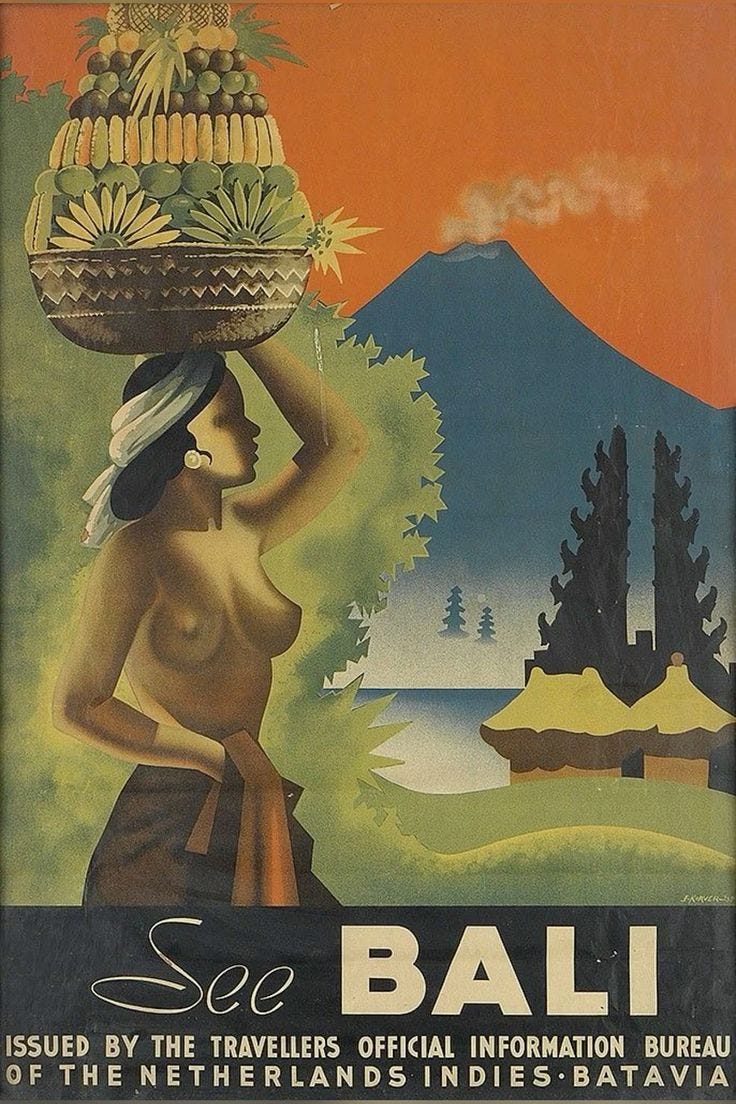
1908 marked the brutal end of the Balinese kingdoms at the hands of the Dutch colonists. Soon afterwards, the Dutch established a tourist bureau in Batavia (present-day Jakarta) to promote the Dutch East Indies as a tourist destination. This initiative culminated in 1924, with the inauguration of a regular steamship service to Bali, and the plan to build a proper hotel by the Koninklijke Paketvaart-Maatschappij (KPM). Initially catering to colonial officials, these early tourists embarked on brief, weekend excursions before returning to their ships or government rest houses. The hotel, called the Bali Hotel, was eventually opened in 1928.
The Dutch Pavilion, Paris, 1931
The Dutch Pavilion at Paris’ 1931 Exposition Coloniale Internationale drew inspiration from various buildings and monuments across the Indonesian archipelago, especially Bali. Architects P.A.J. Moojen and W.J.G. Zweedijk designed the pavilion in sections, aiming to represent both the grandeur and the artistic heritage of the Dutch East Indies (present-day Indonesia). The main pavilion, with its imposing facade, covered a vast area of over 6,000 square metres.
Bali’s First Surfers
The year 1936 marked the beginning of two distinct hospitality movements in Bali. In Kuta, Americans Robert "Bob" Koke and his wife Louise introduced a relaxed surf culture with their Kuta Beach Hotel. (Simultaneously, in Ubud, the Ubud Royal Family collaborated with European artists to establish the Pita Maha art collective.) However, both of these ventures were short-lived. The escalating World War II forced the abrupt cessation of these creative projects, compelling many of those involved to seek safety elsewhere, leaving the Island of the Gods. Despite their brevity, these movements left a lasting legacy, significantly shaping Bali's tourism until now, and contributing to its current renowned reputation as a destination synonymous with arts and craftsmanship as well as a tropical paradise lifestyle.
The InterContinental Controversially Opens
In 1962, at the request of Indonesia's first President, Sukarno, construction began on the Bali Beach InterContinental Hotel (BBIH). Funded by Japanese War Reparations, the project was executed by Japanese and Jakarta-based contractors. Completion occurred after Sukarno's 1966 resignation, with inauguration by then-economic minister Sri Sultan Hamengkubuwono IX. Operational management was then assigned to InterContinental Hotels, at that time a luxury chain established by PanAm to accommodate its cabin crew and tourists.
The hotel's height and architectural style were met with strong disapproval from the Balinese, who perceived it as culturally insensitive and alien, exacerbated by the minimal involvement of local Balinese in its construction. In response to this controversy, an Indonesian entrepreneur Wija Waworuntu championed a more culturally contextual design approach, demonstrating it in his own Tandjung Sari Hotel, widely regarded as Asia's first boutique hotel.
Where The Hoteliers Themselves Buy Homes
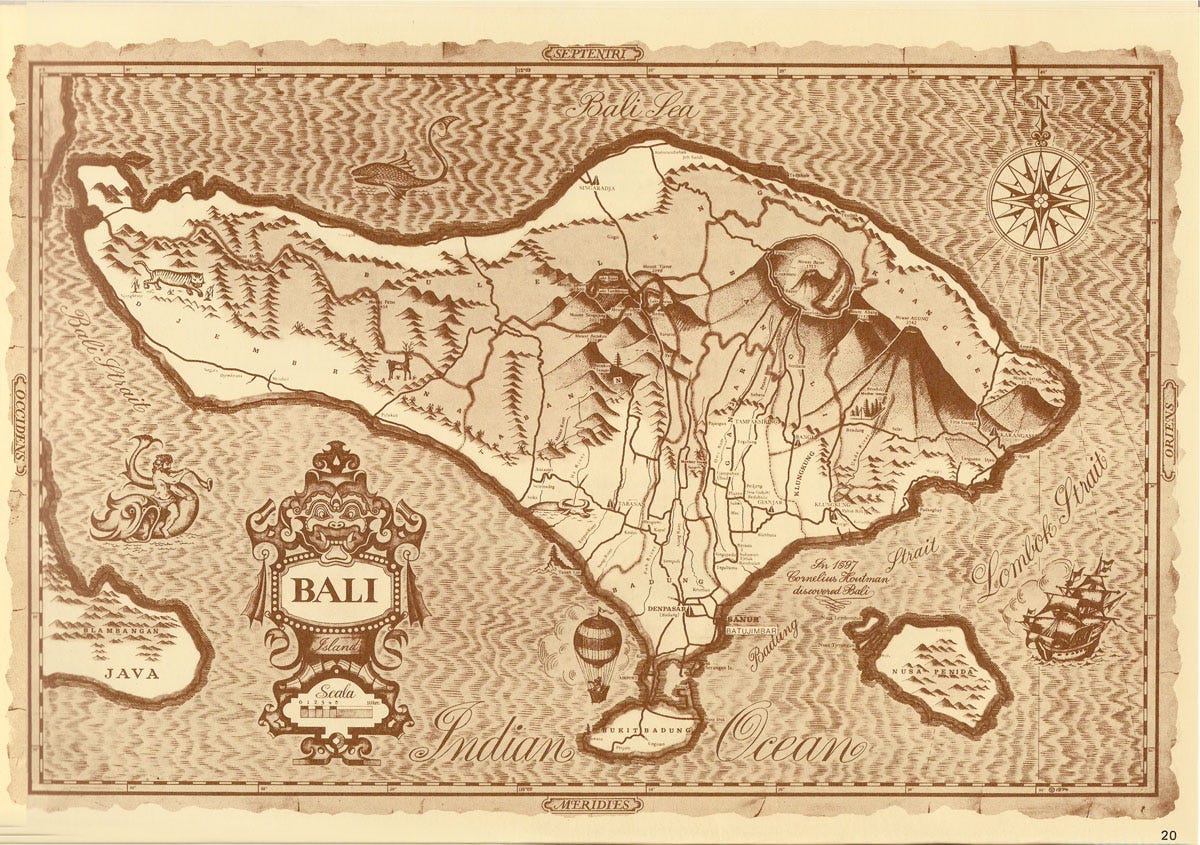
Indonesian entrepreneur Wija Waworuntu, owner of Tandjung Sari Hotel, and Australian artist Donald Friend at one point conceived of a 15-lot Estate. They initially commissioned legendary Sri Lankan architect Geoffrey Bawa to design it. Bawa visited Bali and contributed to the Estate's design, but ultimately, only one lot was completed under his direction. This lot was acquired by Aman Resorts founder Adrian Zecha in 1979. Subsequently, Zecha enlisted American architect Ed Tuttle to renovate the property, marking their second collaboration after Zecha's Hong Kong apartment in the early 1970s. Their partnership continued with Amanpuri in 1988, and the rest is history.
Additionally, Malaysian businessman Ong Beng Seng, who owns multiple Four Seasons resorts across Asia, once held ownership of a lot within the Estate. His wife, Christina Ong, later launched her own hospitality brand, COMO Hotels & Resorts. Another lot within the Estate was once occupied by Australian architect Kerry Hill during his supervision of the Bali Hyatt's construction in the 1970s. Hill went on to achieve renowned status, notably designing his first Aman resort, Amanusa, in 1992, and subsequently crafting numerous complex and monumental resorts for Adrian Zecha, including Amankora in Bhutan (1992-2007), The Datai in Langkawi (1993), Amanyangyun (2007-2017), Aman Kyoto (1995-2020), and the first vertical Aman, Aman Tokyo (2014), among others.
A Hotel From Nearly Two Million Handmade Bricks
Katamama, designed by Indonesian architect Andra Matin, who developed his skills working for the legendary Hendra Hadiprana, features architecture that harmonises building and guest, blending Balinese artistry with contemporary design through meticulous hand craftsmanship. Each of its 1.8 million bricks is individually shaped and fired by hand in a single village in Tabanan, utilising traditional techniques. This time-honoured process employs coconut shells to fuel the kilns. This remarkable, two-year undertaking resulted in Katamama's impressive foundation, a seamless integration of monolithic structure and intricate, light-enhancing patterns. In 2021, Katamama was rebranded as Potato Head Suites.
“No Walls, No Doors”
Buahan, the inaugural resort under the Banyan Tree Escape brand, embodies a radically low-impact 'no walls, no doors' design, a vision conceived by the Banyan Group's founding family and brought to life over a meticulous 15-year development. Central to Buahan's experience is its Open Kitchen and Living Room, where guests are immersed in the resort's commitment to a zero-waste, farm-to-table philosophy. This dedication extends to its menu, which is 70% plant-based and sourced within a one-hour radius. Buahan, featuring only 16 pavilions, illustrates how a profound commitment to responsible luxury can yield exceptional results.
